Daniel Lee Hendricks
age ~56
from Layton, UT
- Also known as:
-
- Daniel L Hendricks
- Dan Lee Hendricks
- Dan L Hendricks
- Danielle E Hendricks
- Phone and address:
-
2230 Canyon View Dr, Layton, UT 84040
8013899007
Daniel Hendricks Phones & Addresses
- 2230 Canyon View Dr, Layton, UT 84040 • 8013899007
- Midvale, UT
- La Habra, CA
- Kaysville, UT
- Blue River, WI
- Cleveland, OH
- West Jordan, UT
Work
-
Company:Health and Wellness Clinic, Layton, UT
-
Address:1025 N Main St, Layton, UT 84041
-
Phones:8015444333
Education
-
School / High School:Byu
Languages
English • Spanish
Images
Specialities
Chiropractic
Us Patents
-
Health Monitoring System Including Privacy-Ensuring Obfuscated Camera Images
view source -
US Patent:20200358925, Nov 12, 2020
-
Filed:Jan 16, 2018
-
Appl. No.:16/962661
-
Inventors:David R. HALL - Provo UT, US
Daniel Allen - Provo UT, US
Conrad Rosenbrock - Provo UT, US
Ben Swenson - Lehi UT, US
Daniel Hendricks - Provo UT, US
Andrew Nguyen - Provo UT, US -
International Classification:H04N 1/44
H04N 7/18
H04N 5/225
A61B 5/00
A61B 5/01
A61B 1/227
A61B 1/267
A61B 1/303
A61B 1/307
A61B 1/313
A61B 1/24
A61B 1/247
A61B 3/12
A61B 5/0205
A61B 5/103
A61B 5/11
A61B 5/107
A61B 3/117
H04N 1/32
A61B 3/14
G06F 21/62
H04L 9/06 -
Abstract:The unobtrusive health-monitoring apparatus includes a camera, a controller, a data transmission port, and, optionally, a graphics processing unit (“GPU”) which executes nonlinear transformation algorithms. The camera may be inconspicuously disposed within a fixture in the room. The camera collects graphic data which may include still images or video of the user, or both. The GPU may execute the nonlinear transformation algorithms which may transform the graphic data into formats which cannot be recognized by humans. However, these formats preserve features that can be parsed by machine learning methods and used for health tracking purposes. The formats cannot be parsed by humans or be converted back to the original image or video by mathematical inversion or available computational methods. User privacy is thus preserved. The graphic data may be transmitted to a remote processor. The remote processor may perform algorithms which create a health status analyses.
-
Medical Toilet With Acoustic Transducers For Collecting Health-Related Measurements
view source -
US Patent:20200297310, Sep 24, 2020
-
Filed:Mar 21, 2019
-
Appl. No.:16/360708
-
Inventors:David R. Hall - Provo UT, US
K. Jeffrey Campbell - Spanish Fork UT, US
Joshua Larsen - Spanish Fork UT, US
Jared Reynolds - Pleasant Grove UT, US
Daniel Hendricks - Provo UT, US
Travis Niederhauser - Mapleton UT, US
Steven J.M. Butala - Provo UT, US
Joshua D. Heiner - Lehi UT, US
A. Terrece Pearman - Draper UT, US
Vivek Garg - Sandy UT, US -
International Classification:A61B 8/00
A61B 5/00 -
Abstract:The medical toilet may include a seat, lid, and bowl as does a traditional toilet. It also includes one or more acoustic transducers. The acoustic transducers may be located on the seat where they may measure bone density in a user's pelvis or femur. The acoustic transducers may be located on the lid or on a belt which wraps around the user. These acoustic transducers may collect data relating to a user's heart, lungs, liver, bowel, or other internal organs. The medical toilet may include a handrail with an acoustic transducer which measures the bone density in the user's wrist, radius, or ulna. A controller associated with the medical toilet may store algorithms for analyzing the data collected by the acoustic transducers. The controller may perform machine learning to improve the analyses and may calculate trends in repeated measurements taken from the same user or a population of users.
-
Sensor Platform Array That Moves Sensor Platforms To Conform To The Shape Of The Subject To Be Monitored
view source -
US Patent:20200253480, Aug 13, 2020
-
Filed:Feb 11, 2019
-
Appl. No.:16/272206
-
Inventors:David R. Hall - Provo UT, US
Joshua Larsen - Spanish Fork UT, US
Jared Reynolds - Pleasant Grove UT, US
Daniel Hendricks - Provo UT, US
Travis Niederhauser - Mapleton UT, US
K. Jeffrey Campbell - Spanish Fork UT, US
Steven J.M. Butala - Provo UT, US
Vivek Garg - Murray UT, US -
International Classification:A61B 5/00
G01L 1/26
A47K 13/24 -
Abstract:The sensor platform array includes a plurality of sensors and one or more sensor platforms. Each sensor may be mounted on a sensor platform. The sensor platform may be mounted on a support panel. The support panel may be mounted on a toilet lid. The one or more sensor platforms may be extendable towards a user seated on the toilet. Each sensor may be independently extended so that it is positioned flush against a user's body. The sensor platform array may include bendable arms which reach around a user and place sensors on the ventral side of the user. The sensors may collect measurements which are relevant to the user's health and well-being. In some embodiments, the sensors may be removable and replaceable so that different sensors may be added according to a user's individual needs.
-
Automatic Bidet Wand Aiming System Based On User's Center Of Mass
view source -
US Patent:20190203454, Jul 4, 2019
-
Filed:Jan 4, 2018
-
Appl. No.:15/862091
-
Inventors:David R. Hall - Provo UT, US
Travis Niederhauser - Mapleton UT, US
Jared Reynolds - Pleasant Grove UT, US
Joshua Larsen - Spanish Fork UT, US
Ben Swenson - Lehi UT, US
Clayton Jorgensen - Bountiful UT, US
Andrew Nguyen - Provo UT, US
Terrece Pearman - Draper UT, US
Daniel Hendricks - Provo UT, US -
International Classification:E03D 9/08
E03C 1/05
G06K 9/00
G05D 3/12 -
Abstract:The bidet system may include multiple seat scales which may float between the toilet bowl rim and the toilet seat. These seat scales may collect measurements which are transmitted to a controller. The controller may include instructions to calculate a user's center of mass based on the measurements and to identify the position of the user's anus based on the center of mass. The controller may then transmit instructions to a bidet wand directing direct the bidet wand to a position which aims a cleansing fluid spray toward the user's anus. A camera which collects images of the user's anal and urogenital region may also be included in the bidet system. The camera may transmit obfuscated images to the controller to identify other areas of the user's anatomy in need of cleansing. The controller may direct the bidet wand to aim a cleansing fluid spray toward these areas.
-
Fault Tolerant Method Of Tagging Pharmaceutical And Nutritional Products Using Multiple Taggants In Varying Ratios
view source -
US Patent:20180334669, Nov 22, 2018
-
Filed:May 17, 2017
-
Appl. No.:15/597633
-
Inventors:David R. Hall - Provo UT, US
Steven J.M. Butala - Provo UT, US
Dan Allen - Springville UT, US
Andrew Nguyen - Provo UT, US
Conrad Rosenbrock - Provo UT, US
Ben Swenson - Lehi UT, US
Daniel Hendricks - Provo UT, US
Joe Fox - Spanish Fork UT, US -
International Classification:C12N 15/10
-
Abstract:We disclose a method of tagging a variety of pharmaceutical or nutritional products in which well-studied chemicals may be added to the products in unique ratios. The identities of the chemicals and their relative ratios comprise unique taggants. The taggants may identify which of multiple distinct categories the product falls within. The method includes the step of systematically varying the relative concentrations of the chemicals resulting in multiple ratios of the chemicals. The plurality of ratios of a defined set of chemicals may be collected to form a library of taggants associated with specified items or categories. As the number of chemicals added per product increases, the library supports more categories and the system is less likely to produce a false positive. The method may result in a series of taggants for each item which is single fault tolerant or double fault tolerant.
-
Tags For Identifying And Tracking Pharmaceutical And Nutritional Products Using Paramagnetic Microparticles And Detectable Chemicals
view source -
US Patent:20180335427, Nov 22, 2018
-
Filed:May 22, 2017
-
Appl. No.:15/601532
-
Inventors:David R. Hall - Provo UT, US
Steven J.M. Butala - Provo UT, US
Dan Allen - Springville UT, US
Andrew Nguyen - Provo UT, US
Conrad Rosenbrock - Provo UT, US
Ben Swenson - Lehi UT, US
Daniel Hendricks - Provo UT, US
Travis Niederhauser - Mapleton UT, US
Terrece Pearman - Draper UT, US
Joe Fox - Spanish Fork UT, US -
International Classification:G01N 33/543
C12Q 1/68
G01N 33/94 -
Abstract:We disclose a tag for tracking and identifying pharmaceutical and nutritional products. The tag includes a paramagnetic microparticle which is connected to at least one unique and detectable chemical. The chemical may be coated on the paramagnetic microparticle or connected through functional groups. The tags may be too large to be taken into the bloodstream and therefore remain in the user's gastrointestinal tract. The tags may be fully or partially isolated from feces for analysis. The tags are attracted to an external electromagnetic force but are not magnetically attracted to each other. Consequently, the tags are safe to ingest. The tags may vary in volume or mass so as to be separable according to mass. The tags may be non-spherical in shape thus increasing the surface area to volume ratio and increasing the amount of chemical which may be attached as a taggant.
-
Medical Toilet With Aptamer Sensors To Analyze Urine
view source -
US Patent:20180321218, Nov 8, 2018
-
Filed:May 8, 2017
-
Appl. No.:15/589403
-
Inventors:David R. Hall - Provo UT, US
Dan Allen - Springville UT, US
Conrad Rosenbrock - Provo UT, US
Daniel Hendricks - Provo UT, US
Andrew Nguyen - Provo UT, US
Steven J.M. Butala - Provo UT, US
Travis Niederhauser - Mapleton UT, US
Terrece Pearman - Draper UT, US
Joe Fox - Spanish Fork UT, US -
International Classification:G01N 33/493
G01N 33/53
G01N 33/487
G01N 33/543
G01N 33/542
G01N 27/327
G01N 21/64
G01N 21/78
A61B 5/00
A61B 5/20 -
Abstract:We disclose an in-toilet urinalysis system which includes a system for collection urine and for analysis of urine components using aptamer technology. Urine collection system may dispense urine into cuvettes, channels, or other containers that include aptamers. The aptamers may detect target molecules in urine. The aptamers may measure urine analytes, detect excreted drugs or drug metabolites, or disease markers. Upon binding to the target molecule, the aptamers may produce a signal which a sensor in the toilet may detect. In some embodiments, the signal may be electrochemical, fluorescent, or colorimetric. The measurements obtained from analysis of the urine may be used to assess a user's health or diagnose disease. In some embodiments, the measurements are stored in a controller which may transmit the measurements to a healthcare provider for assessment.
-
Method Of Using A Library Of Drug Taggants To Asses Decay In Stored Drug Compositions
view source -
US Patent:20180313805, Nov 1, 2018
-
Filed:Apr 26, 2017
-
Appl. No.:15/497501
-
Inventors:David R. Hall - Provo UT, US
Dan Allen - Springville UT, US
Conrad Rosenbrock - Provo UT, US
Daniel Hendricks - Provo UT, US
Andrew Nguyen - Provo UT, US
Steven J.M. Butala - Provo UT, US
Travis Niederhauser - Mapleton UT, US
Joe Fox - Spanish Fork UT, US
Terrece Pearman - Draper UT, US -
International Classification:G01N 33/15
G01N 17/00 -
Abstract:We disclose a method of using taggants to assess how and to what extent a drug in a drug composition has decayed in response to environmental conditions and time. The taggants may decay in response to environmental conditions which cause drugs to lose their efficacy. The decay may occur due to improper storage or excursions into certain environmental conditions. These environmental conditions may include light, temperature, moisture, oxidation, and age. By including taggants that have different decay characteristics, the environmental condition that caused the decay may be determined. The amount of time the drug composition was exposed to the environmental condition and the amount of effective drug remaining may also be determined. The disclosed method may reduce the need for a unique assay for each drug to assess decay and determine shelf life. The disclosed method may also be used as a quality control technique for pharmaceutical products.
Name / Title
Company / Classification
Phones & Addresses
Tulip Cleaning Services
Carpet Cleaners
Carpet Cleaners
11201 Otsego St, North Hollywood, CA 91601
8184714277
8184714277
1ST CHOICE STAFFING SOLUTIONS, INC
Resumes

President
view sourceWork:
President

Software Developer Ii
view sourceWork:
Software Developer Ii

Daniel Hendricks
view source
Daniel Hendricks
view sourceLocation:
United States

Daniel Hendricks
view sourceLocation:
United States

Daniel Hendricks
view sourceLocation:
United States
Medicine Doctors

Dr. Daniel L Hendricks, Layton UT - DC (Doctor of Chiropractic)
view sourceSpecialties:
Chiropractic
Address:
Health and Wellness Clinic, Layton, UT
1025 N Main St, Layton, UT 84041
8015444333 (Phone)
1025 N Main St, Layton, UT 84041
8015444333 (Phone)
Procedures:
Low Back Procedure
Manipulation Adjustments of Back & Neck
Neck Pain Procedure
Physical Therapy
Manipulation Adjustments of Back & Neck
Neck Pain Procedure
Physical Therapy
Conditions:
Back Disorders
Back Injuries
Back Sprain
Fibromyalgia
Headache
Lower Back Injuries
Neck Disorders
Neck Injuries
Neck Muscle Strain
Neck Pain
Sciatica (Not Due to Disc Displacement)
Scoliosis
Sports Injuries
Whiplash Injuries
Back Injuries
Back Sprain
Fibromyalgia
Headache
Lower Back Injuries
Neck Disorders
Neck Injuries
Neck Muscle Strain
Neck Pain
Sciatica (Not Due to Disc Displacement)
Scoliosis
Sports Injuries
Whiplash Injuries
Languages:
English
Spanish
Spanish
Education:
Undergraduate Schools
Byu
Undergraduate Schools
Los Angeles College Of Chiropractic
Byu
Undergraduate Schools
Los Angeles College Of Chiropractic

Daniel E. Hendricks
view sourceSpecialties:
Diagnostic Radiology, Vascular & Interventional Rad
Work:
Corvallis Radiology PC
525 N Santiam Hwy, Lebanon, OR 97355
5417585047 (phone), 5417583713 (fax)
Corvallis Radiology
3600 NW Samaritan Dr, Corvallis, OR 97330
5417585047 (phone), 5417583713 (fax)
East Linn MRI
505 N Santiam Hwy, Lebanon, OR 97355
5414516950 (phone), 5414516953 (fax)
Corvallis MRI A Joint Venture
3615 NW Samaritan Dr, Corvallis, OR 97330
5417685187 (phone), 5417685092 (fax)
525 N Santiam Hwy, Lebanon, OR 97355
5417585047 (phone), 5417583713 (fax)
Corvallis Radiology
3600 NW Samaritan Dr, Corvallis, OR 97330
5417585047 (phone), 5417583713 (fax)
East Linn MRI
505 N Santiam Hwy, Lebanon, OR 97355
5414516950 (phone), 5414516953 (fax)
Corvallis MRI A Joint Venture
3615 NW Samaritan Dr, Corvallis, OR 97330
5417685187 (phone), 5417685092 (fax)
Education:
Medical School
University of Virginia School of Medicine
Graduated: 2003
University of Virginia School of Medicine
Graduated: 2003
Languages:
English
Description:
Dr. Hendricks graduated from the University of Virginia School of Medicine in 2003. He works in Corvallis, OR and 3 other locations and specializes in Diagnostic Radiology and Vascular & Interventional Rad. Dr. Hendricks is affiliated with Good Samaritan Regional Medical Center, Samaritan Lebanon Community Hospital and Samaritan North Lincoln Hospital.

Daniel Ewell Hendricks
view sourceSpecialties:
Surgery
Thoracic Surgery
Cardiothoracic Vascular Surgery
Thoracic Surgery
Cardiothoracic Vascular Surgery
Education:
University of Virginia (1957)
License Records
Daniel Lee Hendricks
Address:
Layton, UT
License #:
336899-1202 - Active
Category:
Chiropractic
Issued Date:
Mar 20, 1997
Expiration Date:
May 31, 2018
Type:
Chiropractic Physician
Daniel K Hendricks
License #:
11359 - Expired
Category:
Emergency Medical Care
Issued Date:
Dec 31, 1995
Effective Date:
Jan 5, 2011
Expiration Date:
Dec 31, 2010
Type:
EMT
Daniel K Hendricks
License #:
4211 - Expired
Category:
Emergency Medical Care
Issued Date:
Dec 31, 1995
Effective Date:
Mar 8, 1999
Type:
EMT A/D
Classmates

Daniel Hendricks
view sourceSchools:
Queen of Apostles High School Madison WI 1960-1964
Community:
Shelly Finn, Bill Berge, Jeffrey Romnes, Julia Sarbacker, Sally Adebayo, Dennis Meyer

Daniel Hendricks
view sourceSchools:
New Hope-Solebury High School New Hope PA 1948-1952
Community:
Robin Pinero, Kevin Mckeever, Robert Proctor

Daniel Hendricks
view sourceSchools:
Jewett-Scio High School Scio OH 1983-1987
Community:
Aimee Gauker, Lois Emery

Daniel Hendricks
view sourceSchools:
The Center School Highland Park NJ 1993-1997
Community:
Christopher Clark, James Mcgowan, Monel Walker

Daniel Hendricks | West N...
view source
Daniel Hendricks, Merkel ...
view source
Daniel Hendricks | Spring...
view source
Daniel Hendricks | Mt. Ca...
view sourceYoutube

Daniel Hendricks
view source
Daniel Hendricks
view source
Daniel Hendricks
view source
Daniel Hendricks
view source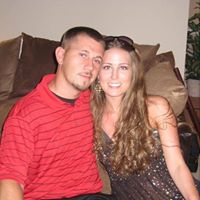
Daniel Hendricks
view source
Daniel Hendricks
view source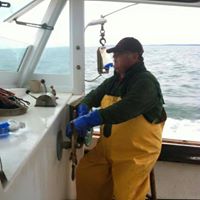
Daniel Hendricks
view source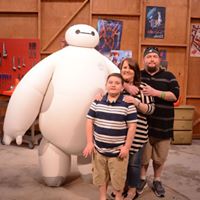
Daniel Nathan Hendricks
view sourceMyspace
Googleplus

Daniel Hendricks
Work:
Wal-Mart - Electronics Sales Associate (2009)
Chattanooga Times Free Press - Graphic Designer (2008-2008)
Ann Arbor News - Inserter (2005-2008)
Chattanooga Times Free Press - Graphic Designer (2008-2008)
Ann Arbor News - Inserter (2005-2008)
Education:
Cleveland State Community COllege, Western Governors University, Washtenaw Community College - Graphic Design, Wasthenaw Technical Middle College - High School

Daniel Hendricks
Education:
Olympic College - Engineering, Olympic High School - High School
Tagline:
I reject your reality, and substitute my own.

Daniel Hendricks
Work:
FedEx - Courier (2010)

Daniel Hendricks
Tagline:
Yet another Social Network.... anyone on here that doesn't work for Google?

Daniel Hendricks
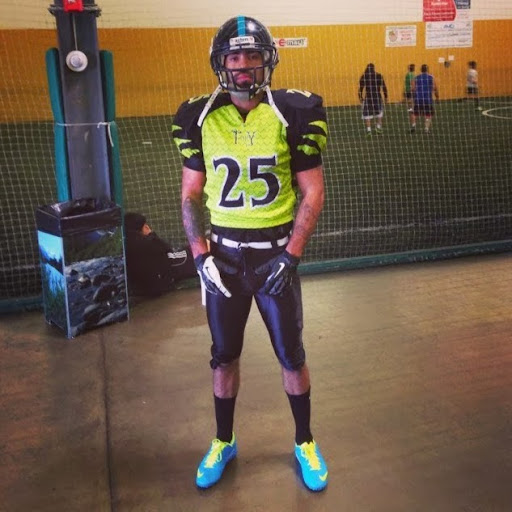
Daniel Hendricks
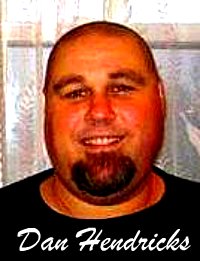
Daniel Hendricks

Daniel Hendricks
Get Report for Daniel Lee Hendricks from Layton, UT, age ~56











